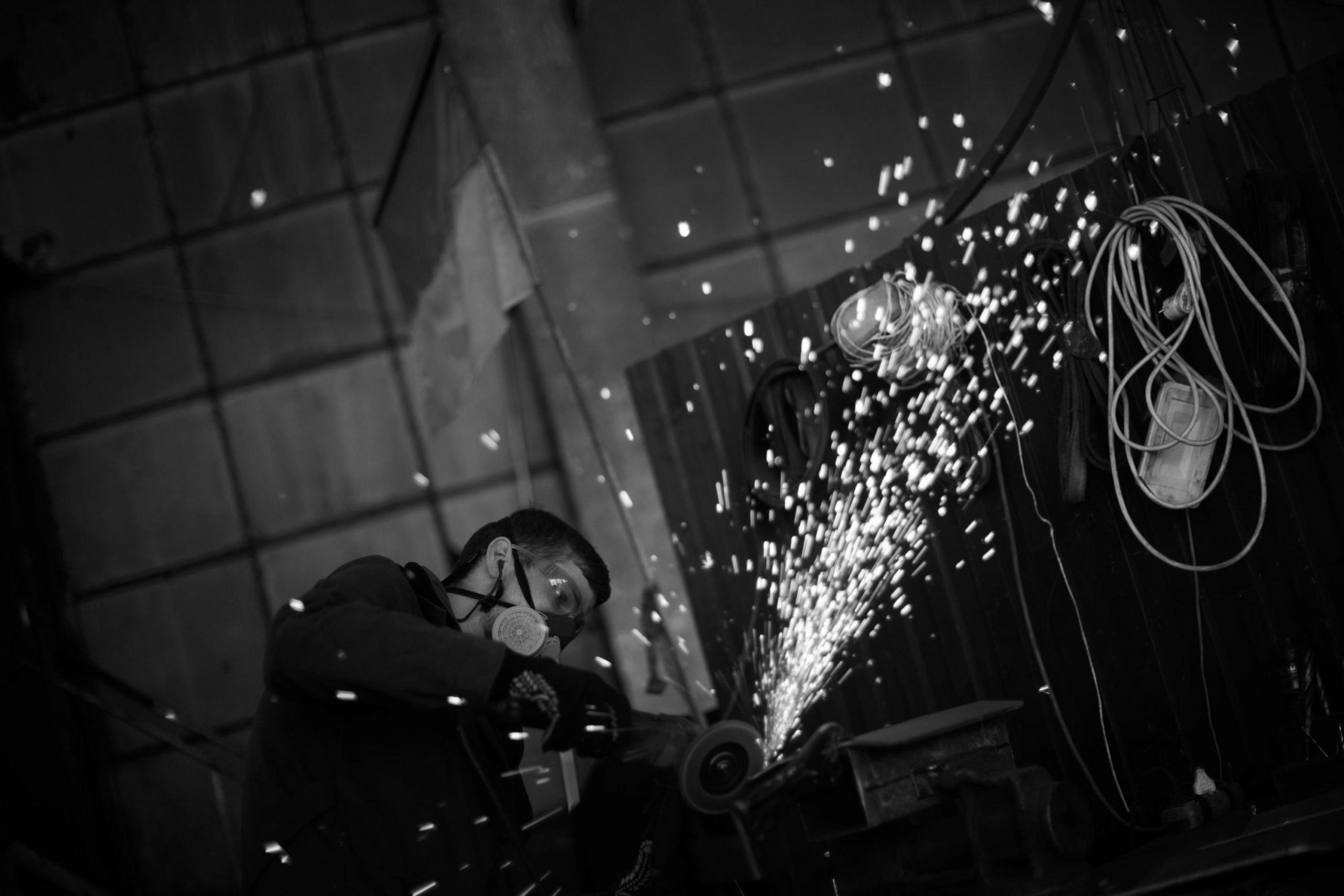Shield the body: Ukraine volunteers craft armor, camouflage
Warning: Undefined variable $post_id in /home/webpages/lima-city/booktips/wordpress_de-2022-03-17-33f52d/wp-content/themes/fast-press/single.php on line 26

2022-05-09 09:16:18
#Shield #body #Ukraine #volunteers #craft #armor #camouflage
ZAPORIZHZHIA, Ukraine (AP) — Sparks fly as a circular noticed slices into metal, whereas welders nearby work feverishly to the sound of blaring heavy steel. Upstairs, sewing machines clatter as girls mark patterns on cloth being shaped into bulletproof vests.
An outdated industrial complicated within the southeastern Ukrainian riverside city of Zaporizhzhia has develop into a hive of activity for volunteers producing every part from body armor and anti-tank obstacles to camouflage nets, transportable heating stoves and rifle slings for Ukrainian troopers combating Russia’s invasion. One section makes a speciality of autos, armor-plating some, changing others into ambulances. One other organizes food and medical deliveries.
With the front line about 50 kilometers (30 miles) from town, some sections of the operation, such because the stitching of bulletproof vests, are working around the clock in shifts to meet demand. Crowdfunding has brought in enough cash to purchase metal from Sweden, Finland and Belgium, which is lighter than native steel, organizers say, a vital quality for body armor.
The operation is the brainchild of native movie star Vasyl Busharov and his pal Hennadii Vovchenko, who ran a furniture-making enterprise. They named it Palianytsia, a sort of Ukrainian bread whose identify many Ukrainians say cannot be pronounced correctly by Russians.
The operation depends fully on volunteers, who now number more than 400 and come from all walks of life, from tailors to craftsmen to lawyers. Other than these involved in production, there are also drivers delivering humanitarian help and medical gear bought via donated funds.
“I feel I am needed here,” stated clothier Olena Grekova, 52, taking a short break from marking cloth for vests.
When Russia invaded on Feb. 24, she was in Thailand searching for inspiration for her spring collection. Initially, she mentioned, she questioned whether or not it was a sign from God that she shouldn’t return. Her husband and two grownup sons urged her to not.
“However I decided that I had to go back,” she said.
She had recognized Busharov for years. Arriving residence on March 3, she gathered her gear the next day and by March 5 was at Palianytsia. She’s been working there day-after-day since, bar one, generally even at night.
Shifting from designing backless ballgowns to creating purposeful bulletproof vests was “a new experience for me,” Grekova said. But she sought feedback from troopers for her designs, which have armor plates added. Now she helps to supply a number of versions, including a prototype summer time vest.
In one other section of the commercial complex, 55-year-old Ihor Prytula was busy making a new camouflage web, winding pieces of dyed material by a string frame. A furniture-maker by commerce, he joined Palianytsia at the start of the war. He had some army expertise, he mentioned, so it was simple to get suggestions from soldiers on what they wanted.
“We communicate the identical language,” he stated.
For Prytula, the war is private. His 27-year-old son was killed in late March as he helped evacuate folks from the northern city of Chernihiv.
“The conflict and death, it’s dangerous, belief me, I know this,” he said. “It’s unhealthy, it’s tears, it’s sorrow.”
The call for volunteers went out as quickly because the warfare started. Busharov announced his mission on Facebook on Feb. 25. The next day, 50 folks turned up. “Subsequent day 150 folks, next day 300 folks. ... And all collectively, we attempt (to) defend our city.”
They began out making Molovov cocktails in case Russian troopers superior on Zaporizhzhia. In 10 days, they produced 14,000, he stated. Then they turned to producing anti-tank obstacles referred to as hedgehogs — three large steel beams soldered together at angles — used as a part of town’s defenses. Quickly, Busharov and Vovchenko mentioned, they discovered another pressing need: there weren’t sufficient bulletproof vests for Ukraine’s troopers.
However studying how you can make one thing so specialised wasn’t easy.
“I wasn’t really connected with the navy in any respect,” said Vovchenko. “It took two days and three sleepless nights to understand what needs to be achieved.”
The team went by varied types of metal, making plates and testing them to verify bullet penetration. Some didn’t provide enough safety, others have been too heavy to be purposeful. Then they had a breakthrough.
“It seems that metal used for car suspension has superb properties for bullet penetration,” Vovchenko stated, standing in front of four cabinets of test plates with various degrees of bullet damage. The one made of car suspension metal showed dozens of bullet marks but none that penetrated.
The vests and everything else made at Palianytsia are offered free to soldiers who request them, as long as they will prove they're within the navy. Each plate is numbered and every vest has a label noting it's not for sale.
To date, Palianytsia has produced 1,800 bulletproof vests in two months, Busharov stated, adding there was a ready list of around 2,000 extra from throughout Ukraine.
Vovchenko stated they have heard about as much as 300 people whose lives have been saved by the vests.
Realizing that is “extremely inspiring and it keeps us going,” he mentioned.
____
Inna Varenytsia in Zaporizhzhia, Ukraine, contributed.
___
Comply with all AP tales on the warfare in Ukraine at https://apnews.com/hub/russia-ukraine
Quelle: apnews.com